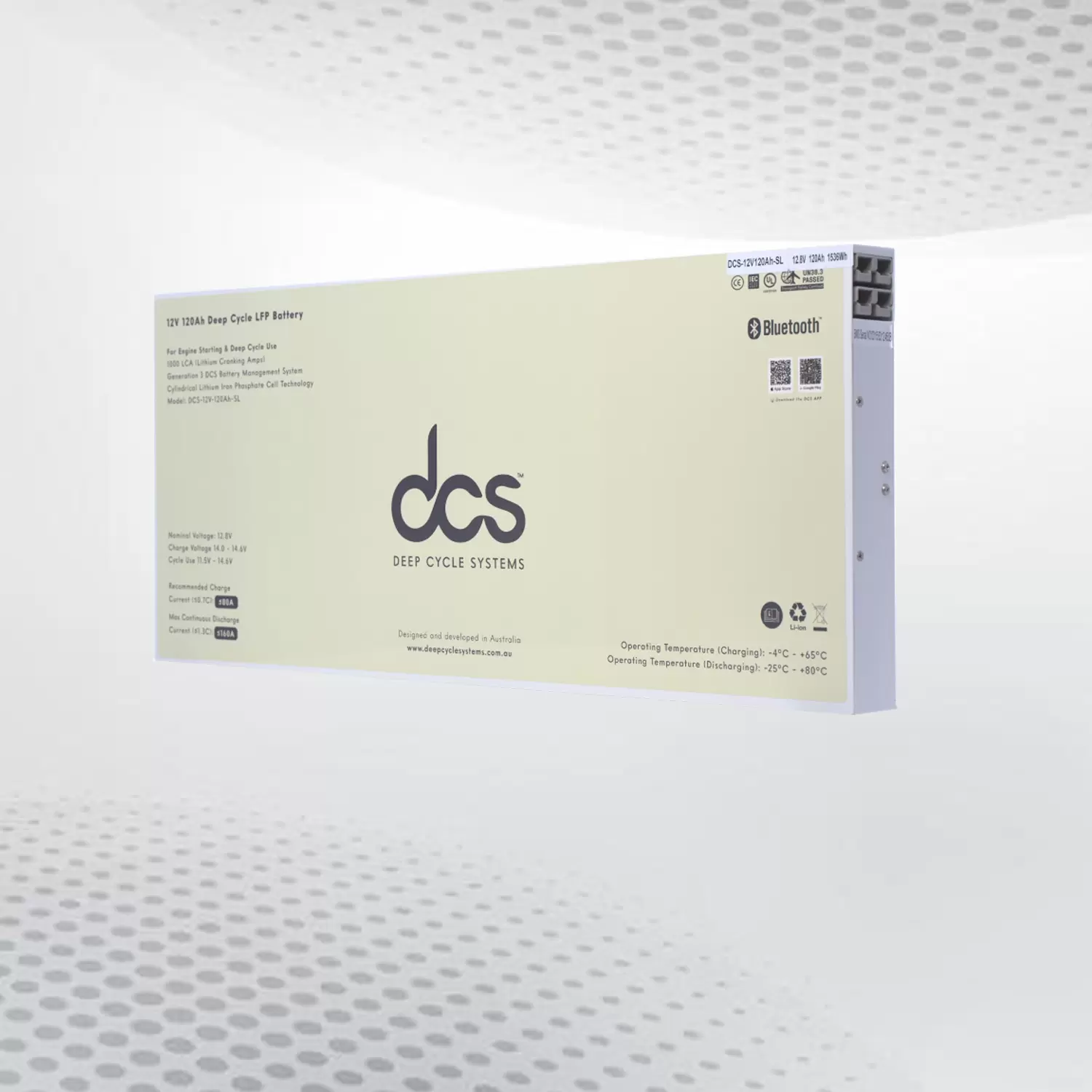Everything You Need To Know About 100 Amp Deep Cycle Battery

The 100-amp deep cycle battery is notable for its adaptability and efficiency when considering energy storage solutions. Designed to deliver a consistent power flow over extended periods, these batteries are handy in various settings. They are commonly employed in solar power installations, marine environments, and recreational vehicles (RVs), where reliable energy storage is essential.
This blog aims to examine various aspects of 100 amp deep cycle battery, including its capacity, maintenance, safety measures, and environmental impacts. With an emphasis on factual and practical information, readers will gain a thorough understanding of these batteries' integral role in modern energy systems.
Understanding Battery Capacity
The capacity of a battery, measured in amp-hours (Ah), represents its ability to store and supply energy over time. For instance, a 100-amp deep cycle battery can provide 100 amps for one hour or 10 amps for ten hours. This capacity rating is crucial as it determines how long the battery can power various devices before recharging. In practical terms, a higher amp-hour rating allows for a longer duration of energy supply, making it especially advantageous for applications requiring sustained power. This includes solar installations, electric vehicles, and marine electronics, where consistent energy availability is essential.
Typical Applications of 100 ah Deep Cycle Batteries
100 ah deep cycle batteries are extensively used in various applications because they provide consistent and long-lasting power. In solar power systems, these batteries store energy generated during sunny periods, ensuring a reliable supply even during cloudy days or nighttime. The marine sector also benefits from these batteries, essential for powering onboard electronics, lighting, and navigation systems and allowing for uninterrupted maritime activities.
Recreational vehicles (RVs) rely on 100Ah deep-cycle batteries to operate appliances such as refrigerators, lights, and entertainment systems, contributing to a comfortable travel experience. Their resilience and deep discharge capability make them vital for environments where continuous power is paramount.
Maintenance Tips
Proper care of a 100-ah deep cycle battery significantly enhances its operational life. Regular inspections should be carried out to ensure that the terminals remain clean and free from corrosion. Connections must be checked for tightness to maintain efficient conductivity. In the case of flooded batteries, monitoring electrolyte levels and replenishing with distilled water when necessary is vital.
Maintaining an appropriate charge is also crucial; overcharging and undercharging can reduce performance and longevity. Periodically, using a hydrometer can help assess the battery's state of charge. Prompt attention can prevent further deterioration if the battery exhibits signs of wear, such as decreased capacity or trouble maintaining a charge. Implementing these maintenance practices can help ensure the battery's efficiency and reliability over time.
Lifespan of 100ah deep cycle Batteries
The lifespan of a 100ah deep cycle battery is influenced by several factors, including usage patterns, temperature conditions, and charging practices. Deep discharges, where the battery is drained significantly before recharging, can reduce the lifespan. Similarly, exposure to extreme hot and cold temperatures can adversely affect battery performance and longevity.
Consistent and appropriate charging is crucial; improper charging practices, such as overcharging or undercharging, can lead to premature wear and a decline in battery efficiency. Routine inspections and maintenance are essential to identify signs of wear, such as decreased capacity or difficulty maintaining a charge.
By adhering to recommended usage and maintenance guidelines, one can maximise the operational life of a 100 Ah deep-cycle battery.
Safety Precautions
When dealing with 100 Ah deep-cycle batteries, several safety measures should be observed to ensure proper handling and storage. Batteries should always be stored in a well-ventilated area to prevent the build-up of any potentially hazardous gases. During installation or maintenance, wearing appropriate protective gear, such as gloves and safety goggles, is essential to avoid contact with corrosive battery acid.
Batteries should be kept away from heat sources and direct sunlight to prevent overheating, which can lead to malfunctions or even explosions. Additionally, avoiding placing heavy objects on the battery is essential to prevent physical damage.
Batteries should be secured during transport to avoid movement and potential short-circuiting. Being mindful of these precautions can help maintain a safe environment while ensuring the longevity and efficiency of the battery.
Selecting the Good Deep Cycle Battery for Your Needs
Selecting the good deep cycle battery involves evaluating the specific demands of the intended application. The anticipated load, usage frequency, and environmental conditions are critical factors in this decision-making process. For instance, a battery employed in a solar power system will have distinct requirements compared to one used in a marine environment or an RV.
It is essential to consider the power consumption of the devices the battery will support, ensuring the battery's capacity can sustain these demands over the required duration. Environmental conditions like temperature and humidity can also influence battery performance and longevity. Batteries operating in extreme temperatures may require additional protective measures or specific designs better suited for such conditions.
Furthermore, the expected frequency of deep discharges and recharge cycles should be factored in, as it can affect the battery's operational life. By thoroughly assessing these variables, one can select a deep-cycle battery that delivers optimal performance, reliability, and longevity tailored to the application's needs.
Environmental Impact and Recycling
Environmental Impact of 100 Ah Deep-Cycle Batteries
The ecological implications of using and disposing of 100 Ah deep-cycle batteries are noteworthy, considering the potential harm caused by incorrect handling. These batteries comprise a range of chemicals and heavy metals, including lead, lithium, and sulphuric acid, which pose environmental risks if disposed of improperly. These elements can seep into soil and water systems when discarded in landfills, leading to prolonged ecological damage.
Various recycling initiatives have been implemented to address these hazards and ensure the responsible and efficient processing of depleted batteries of depleted batteries.
The Importance of Recycling Programmes
The recycling process involves dismantling the battery into its constituent materials, which can be repurposed to produce new batteries or other goods. This decreases reliance on raw materials and mitigates the environmental toll associated with mining and extraction processes. Furthermore, recycling aids in reducing the amount of hazardous waste, fostering safer and cleaner communities.
Numerous regions have established regulations and facilities specifically for battery recycling. These centres are equipped to manage diverse battery types, ensuring they are processed ecologically soundly. By following local disposal and recycling guidelines, individuals and organisations can significantly diminish the environmental impact of 100 Ah deep-cycle batteries. This collaborative endeavour is essential for fostering sustainable practices and conserving natural resources for future generations.
Future Developments in Battery Technology
Battery technology is undergoing significant advancements, poised to revolutionise the performance and efficiency of 100-amp deep cycle batteries. One of the most promising developments is the advent of solid-state batteries. Unlike traditional liquid electrolyte batteries, solid-state variants utilise a solid electrolyte, which enhances energy density and reduces the risk of leakage and thermal instability. This innovation is set to offer longer lifespans and improved safety profiles for deep-cycle batteries.
Another notable progression is in the field of lithium-ion technology. Enhanced lithium-ion batteries are being designed with higher energy capacities and faster charging capabilities. These improvements are achieved through electrode materials and battery chemistry advancements, which aim to minimise energy loss and extend battery longevity. As a result, users can expect deep-cycle batteries that are more efficient and durable.
Additionally, the integration of innovative technology into battery management systems (BMS) is gaining traction. These systems can monitor parameters such as temperature, charge levels, and overall health, providing real-time data that optimises battery performance and maintenance. Artificial intelligence in BMS can predict potential issues before they become critical, enhancing reliability and operational efficiency.
These technological strides indicate a promising future for 100-amp deep-cycle batteries, with improvements set to meet the increasing demands for sustainable and reliable energy storage solutions.
Conclusion
In summary, 100 amp deep cycle battery is vital in various energy storage applications, offering reliable and consistent power for extended periods. Proper maintenance, including regular inspections and appropriate charging practices, maximises lifespan and performance. Safety precautions must be observed to ensure safe handling and storage. Environmental impact is crucial, and recycling programmes significantly mitigate potential ecological harm. Looking ahead, advancements in battery technology, such as solid-state batteries and enhanced lithium-ion variants, promise further efficiency, safety, and longevity improvements. These developments underscore the importance of staying informed about the latest innovations in battery technology.
FAQs
What is the role of a 100 amp deep cycle battery in energy systems?
The 100 amp deep cycle battery is critical in energy storage setups because it offers reliable power over long durations. It's also used extensively in solar power installations, marine settings, and recreational vehicles to ensure a steady energy source.
How can one ensure the longevity and safety of these batteries?
Maintaining these batteries involves regular checks and proper charging techniques. Observing safety protocols during handling and storage is also vital. Selecting an appropriate battery necessitates assessing specific needs, such as load requirements and environmental factors.
Why are environmental considerations important for these batteries?
Environmental concerns are significant, and recycling initiatives are crucial to lessening their ecological footprint. Innovations like solid-state batteries and improved lithium-ion versions aim to enhance efficiency, safety, and lifespan.
What advancements are enhancing battery performance and management?
Integrating innovative technology into battery management systems improves performance and upkeep. Such advancements aim to optimise efficiency and extend the battery's operational life.
What factors affect the lifespan of these batteries?
Their use impacts their lifespan, the temperatures they're exposed to, and charging methods. Adhering to suggested practices can extend their service life, underscoring the need for ongoing awareness of new technologies and maintenance standards.
|
Related Business Listings |






